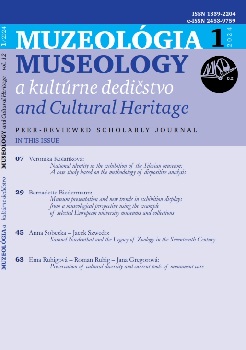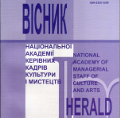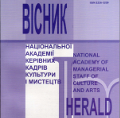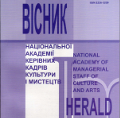Author(s): Volodymyr Ovcharek,Andrii Kravets / Language(s): Ukrainian
Issue: 3/2024
The purpose of the article is to analyse the use of fair plots in the works of Pieter Bruegel the Elder, to reveal their symbolism in presenting the panorama of contemporary society. The methodology of the work consists in the application of such scientific research methods as: historical – when examining the artist's paintings in the context of the historical era in which he lived and worked; analytical, which made it possible to single out works with a fair plot from the artist's creative heritage; synthetic, thanks to which observations acquired through analysis became the basis for formulating a general conclusion; comparative art analysis is applied to reveal the specifics of Bruegel's genre painting depicting fairs. The scientific novelty of the work consists in the actualisation of the study of the work of the Dutch artist Pieter Bruegel the Elder, which presents fair scenes that enabled the artist to comprehensively present the motley society of that time in an artistic manner specific to the artist. Conclusions. Pieter Bruegel the Elder's paintings are filled with hidden meaning, the depicted events are connected with history, contemporary politics, reflect the thoughts and ideas of the author, that is, they are symbolic. Bruegel is one of the founders of Dutch genre painting – a direction of fine art in which the painter's attention is devoted to ordinary, everyday, multifaceted life, in the centre of which are people. Using fair plots, the artist discovered new themes and images for art. With the help of fair scenes, Bruegel depicted a generalised picture of the life of society, recorded the traditions and daily life of his contemporaries. The artist's paintings are historical documents that make it possible to track the activities of his compatriots. Pieter Bruegel the Elder, thanks to his creative, innovative abilities, a keen sense of the urgent problems of his people, acquired many followers who copied his paintings, in particular from fair themes, developed his plots. For the artist, the fair plots became a conceptual basis that contributed to the comprehensive artistic reproduction of the national characteristics of the Dutch people, as well as a means of figuratively embodying his creative ideas. The fair theme of the paintings allowed the artist to depict the peculiarities of the modern multifaceted life and activities of the Dutch people, to demonstrate the transformational processes that took place among different layers of the population, to present his own vision of the panorama of the contemporary society, the miniature format of which was the fairs.
More...







